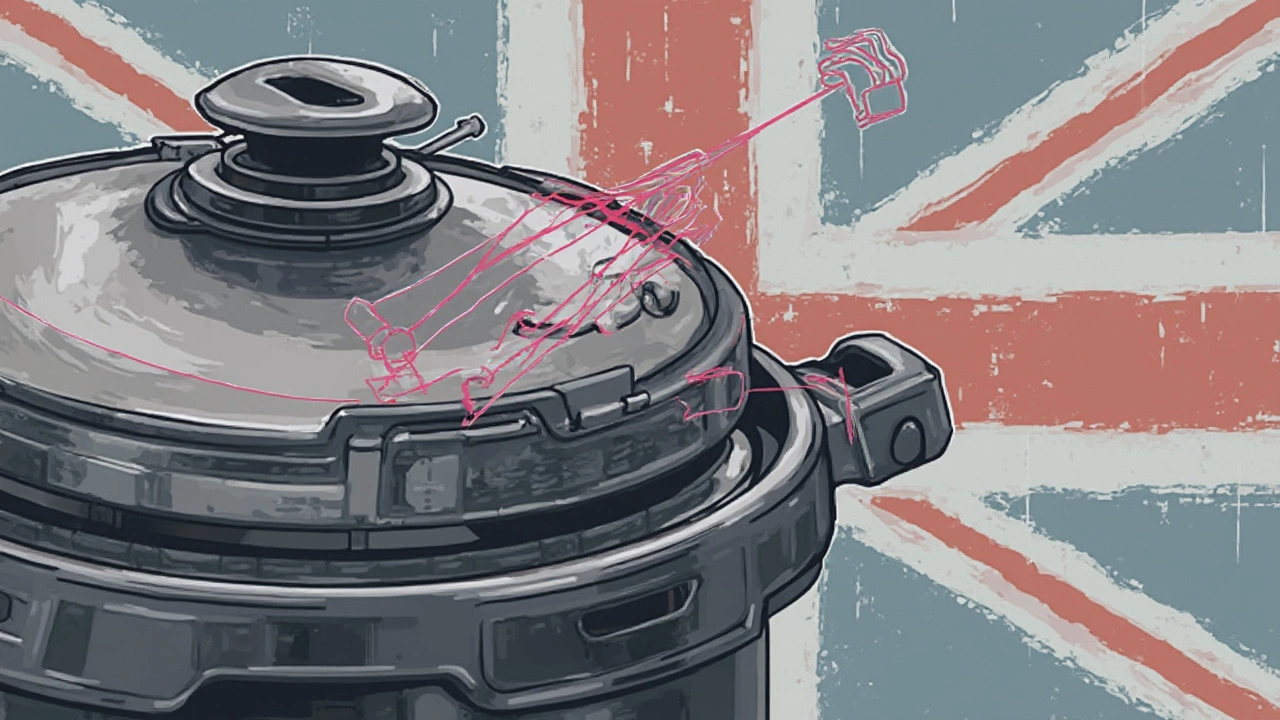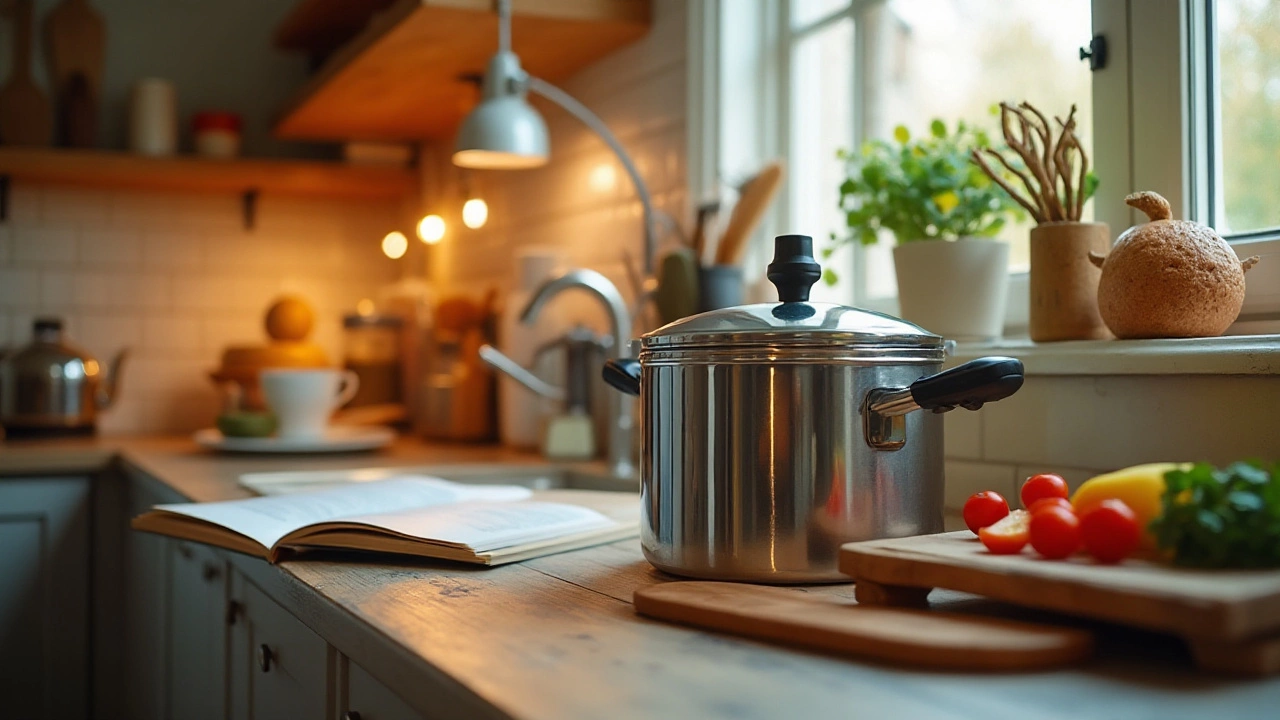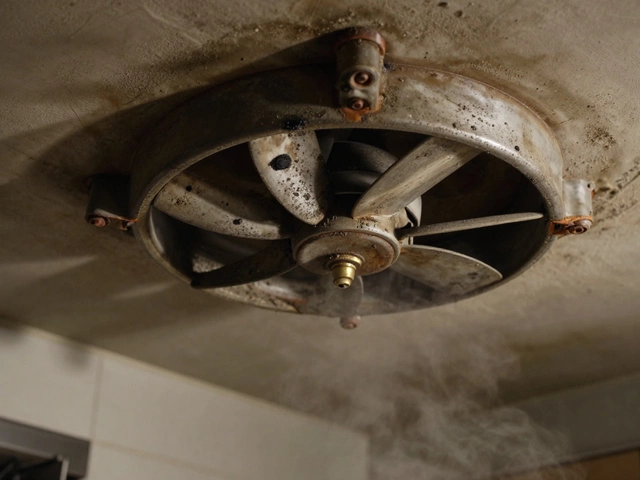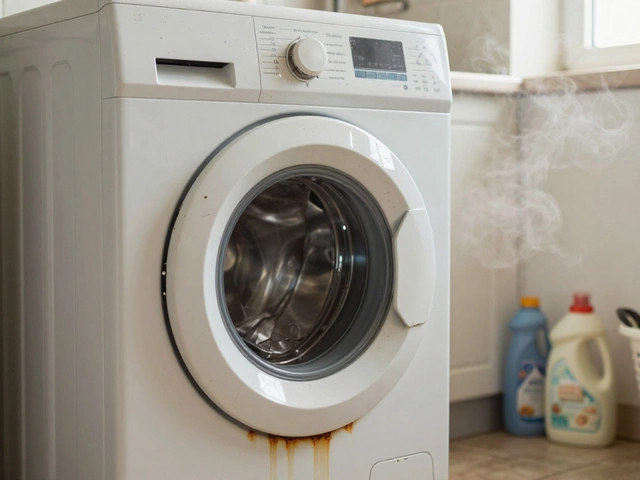If your pressure cooker stops working, don’t toss it just yet. Most of the time, it’s a simple problem with the seal, the valve, or the lid. The good news? A lot of these issues can be checked and even fixed at home with basic tools—you don’t need to be a kitchen gadget expert or a repair wizard.
For example, if the cooker isn’t building up pressure, the rubber gasket might be worn out or out of place. These gaskets are cheap and widely available online, and swapping one out usually takes about a minute. Another common problem is a clogged safety valve or steam vent. Food bits can sometimes get stuck, stopping steam from escaping like it should. Cleaning these parts out is simple—just make sure the cooker is cool first.
Of course, not everything can be fixed at home. If you’re dealing with broken handles, deep cracks in the metal, or electrical problems on fancy digital models, that’s a whole different ball game. In those cases, safety comes first, and it might be better to replace rather than repair.
Stick around to find out which problems you can tackle yourself, which are better left to the pros, and how to keep your pressure cooker running safely for years—because let’s face it, nothing beats tender, fall-apart stews on a lazy weekend.
- Common Pressure Cooker Problems
- Which Parts Can Be Repaired?
- Basic DIY Fixes vs. When to Call a Pro
- Tips to Keep Your Pressure Cooker Going Strong
Common Pressure Cooker Problems
Pressure cookers are reliable, but when something goes wrong, it usually falls into a handful of common issues. If you’re staring at a pot that’s hissing, leaking, or just won’t build pressure, you’re not alone. Most problems come down to three main troublemakers: seal issues, valve blockages, and wear and tear on key parts.
The rubber gasket—sometimes called the sealing ring—is usually the first part to give you trouble. If it’s dry, cracked, or just not sitting right, your cooker won’t pressurize or might leak steam around the lid. If you’ve been using your pressure cooker for over a year without changing the gasket, it’s probably overdue for a swap.
- Leaking Lid: This is often caused by a worn-out or dirty gasket, but sometimes food debris around the rim can stop it sealing too.
- Stuck or Noisy Pressure Valve: Sometimes the safety or pressure valve gets food stuck in it. If there’s hissing or rattling, or no pressure at all, give the valve a careful cleaning.
- Pressure Not Building Up: This can be because of a faulty gasket, loose lid, blocked vent pipe, or not enough water inside the pot. A quick check of all three usually reveals the culprit.
- Handle Breakage: Handles on older stovetop models see a lot of abuse, especially if you drag your cooker out from a crowded cabinet. Broken handles make things dangerous—pressure plus a wobbly grip is a recipe for disaster.
- Electrical Faults (on electric cookers): If your digital model won’t turn on or gives error codes, that could be a circuit board or heating element issue. These can be tricky or expensive to fix at home.
Here’s a quick look at how common certain issues are, based on a small repair shop survey in 2023:
| Problem | % of Repairs |
|---|---|
| Faulty Gasket | 42% |
| Blocked Valve | 21% |
| Leaky Lid (not gasket) | 13% |
| Handle Breaks | 16% |
| Electrical Issues | 8% |
Stuck with one of these? Grab your manual and take a look at the troubleshooting page. Most brands have clear diagrams showing which part does what, so you don’t have to play guessing games. Quick tip: never try force-opening a cooker that still has pressure inside—it’s not worth the risk.
Which Parts Can Be Repaired?
The good news is that most pressure cooker repair jobs don’t need special skills. There are several parts that can be swapped out or fixed without major hassle. Here’s what you can usually repair yourself—and what’s best left alone.
- Gasket (Rubber Sealing Ring): This part does most of the heavy lifting when it comes to sealing. If your cooker isn’t pressurizing or steam leaks from the lid, check the gasket first. These wear out naturally after 1-2 years for most folks, so replacements are common and cheap.
- Safety Valve: This little part is designed to blow or release steam if the pressure gets too high, keeping things safe. If it’s stuck, broken, or missing, you can get a new one from most manufacturers or online. Just make sure it’s the right fit for your model.
- Pressure Regulator/Weight: This is the thing that rocks or rattles on older stovetop models. If steam is leaking nonstop or it won’t sit right, the regulator might be clogged or warped. Cleaning or replacing it is usually straightforward.
- Lid Locking Mechanism: If your cooker won’t lock shut or open properly, check the locking parts for grime or bent pieces. Most plastic locks or pins can be cleaned up or swapped out if they’re warped or broken.
- Handles and Screws: Handles see a lot of abuse, especially heavy-handed lifting when the cooker is full. Replacement handles are sold for most big brands, and it’s usually as simple as removing a couple of screws and putting on the new one.
Here’s a quick peek at common parts you can replace, and how often they might need it:
| Part | Can Replace? | How Often? |
|---|---|---|
| Gasket | Yes | Every 1-2 years |
| Safety Valve | Yes | After visible wear or leaks |
| Pressure Regulator | Yes | When clogged/broken |
| Handles | Yes | When cracked/loose |
| Inner Pot (electric cookers) | Yes | When scratched/damaged |
Some parts are tricky, like the base of the cooker (especially if damaged or warped). If your pressure cooker has a damaged base, cracked metal, or electrical issues (like with digital models), fixing those isn’t practical or safe for most people. That’s when you should either call a pro or consider replacing the whole unit.
Stick to changing out the small, removable parts, and you’ll squeeze a lot more life out of your pressure cooker. It’s easy to get the parts online, and you don’t need a ton of tools or experience for these repairs.

Basic DIY Fixes vs. When to Call a Pro
Let’s be real: not every pressure cooker repair job needs a technician. Plenty of small problems you can totally fix on your kitchen counter. Knowing when to grab the toolbox (or just a new part) and when it’s time to wave the white flag does make a world of difference.
Here are some common fixes you can handle at home:
- Replacing the gasket: When the cooker loses pressure or leaks steam, the gasket is usually toast. Swap it out for a new one—it’s cheap and takes less than five minutes. Just make sure you get the right size for your model.
- Unclogging a safety valve or vent: If you notice steam isn’t flowing like it should, shut everything down and check for food gunk. Clean with a toothpick or brush. Never poke metal objects that might damage the part.
- Tightening or changing the lid handle: If a handle is loose, most are attached by a screw or bolt you can tighten or replace. Just double-check for cracks before fixing.
- Cleaning the sealing rim: Sometimes, food or grime around the rim keeps your cooker from sealing. A good wipe-down can sort this out and get back proper pressure.
But what about when things get weird or risky? Here’s when you should call a pro… or just buy a new cooker:
- Deep cracks or dents in the body: This isn’t just about looks. Damage here can mess with pressure and safety. Don’t try to hammer it out—replace the cooker.
- Electrical issues (for electric pressure cookers): If it won’t turn on, displays error codes, or smells like burning, unplug right away. Messing with electrical stuff isn’t safe unless you’re trained.
- Faulty or broken safety valve: A pressure cooker’s safety valve is a lifesaver if something goes wrong. If it won’t work after cleaning, you need a specific replacement part and sometimes pro help installing it.
| Problem | DIY Fix | Needs a Pro/New Cooker |
|---|---|---|
| Leaky Seal | ✔ Change gasket | |
| Clogged Valve | ✔ Clean vent | |
| Electrical Failure | ✔ Call pro | |
| Dented Body | ✔ Replace | |
| Cracked Lid | ✔ Replace | |
| Broken Handle | ✔ Tighten/Replace |
Sticking to basic cooker maintenance and being honest about your comfort level with fixes will keep your pressure cooker reliable and safe. Don’t be afraid to look up specific model guides or videos—most mainstream brands have step-by-step DIY instructions right on their sites. And hey, if it sounds dodgy, trust your gut and put safety first. This is one appliance you don't want to risk with a shortcut.
Tips to Keep Your Pressure Cooker Going Strong
If you want your pressure cooker to keep churning out great meals year after year, regular care is a must. Let’s tackle what actually works, based on what seasoned home cooks (and repair dudes) swear by.
- Check your gasket often: That soft rubber ring inside the lid wears out faster than you’d expect. Look for cracks or stretching every couple months. If it feels loose, swap it. This little step is at the heart of cooker maintenance.
- Keep the valves clean: Steam vents and safety valves love to collect gunk, especially after a big batch of chili. Use a toothpick or a brush (not a knife) to gently clear any buildup after each use.
- Don’t overfill: It’s tempting to squeeze in just a bit more, but going over the ‘max’ line puts pressure on seals and valves, risking damage. Stick to two-thirds full for most recipes or even less for stuff that foams up.
- Dry before reassembling: Before putting your cooker away, let all parts dry fully, especially the gasket and lid. Moisture can mess with the seal and might even cause odors.
- Avoid harsh scrubbers: Metal pads can scratch the inside and ruin nonstick surfaces. A soft sponge gets the job done, and makes sure your cooker looks (and works) like new.
According to the American Test Kitchen, pressure cookers can last over a decade with this sort of regular TLC. Here’s their advice:
“A little bit of routine maintenance—checking the gasket, keeping the valve clear, and drying your cooker thoroughly—can prevent 90% of the issues people have with pressure cookers.”
Ever wonder how long the gaskets usually last? Take a look at this handy table:
| Part | Average Replacement Time |
|---|---|
| Gasket | Every 12-18 months |
| Safety Valve | Every 2-3 years |
| Pressure Indicator | 3-5 years (if showing wear) |
Little steps like these become second nature and keep your pressure cooker repair bills low. Think of it like changing the oil in your car: boring, but way better than paying for a big fix down the road.



